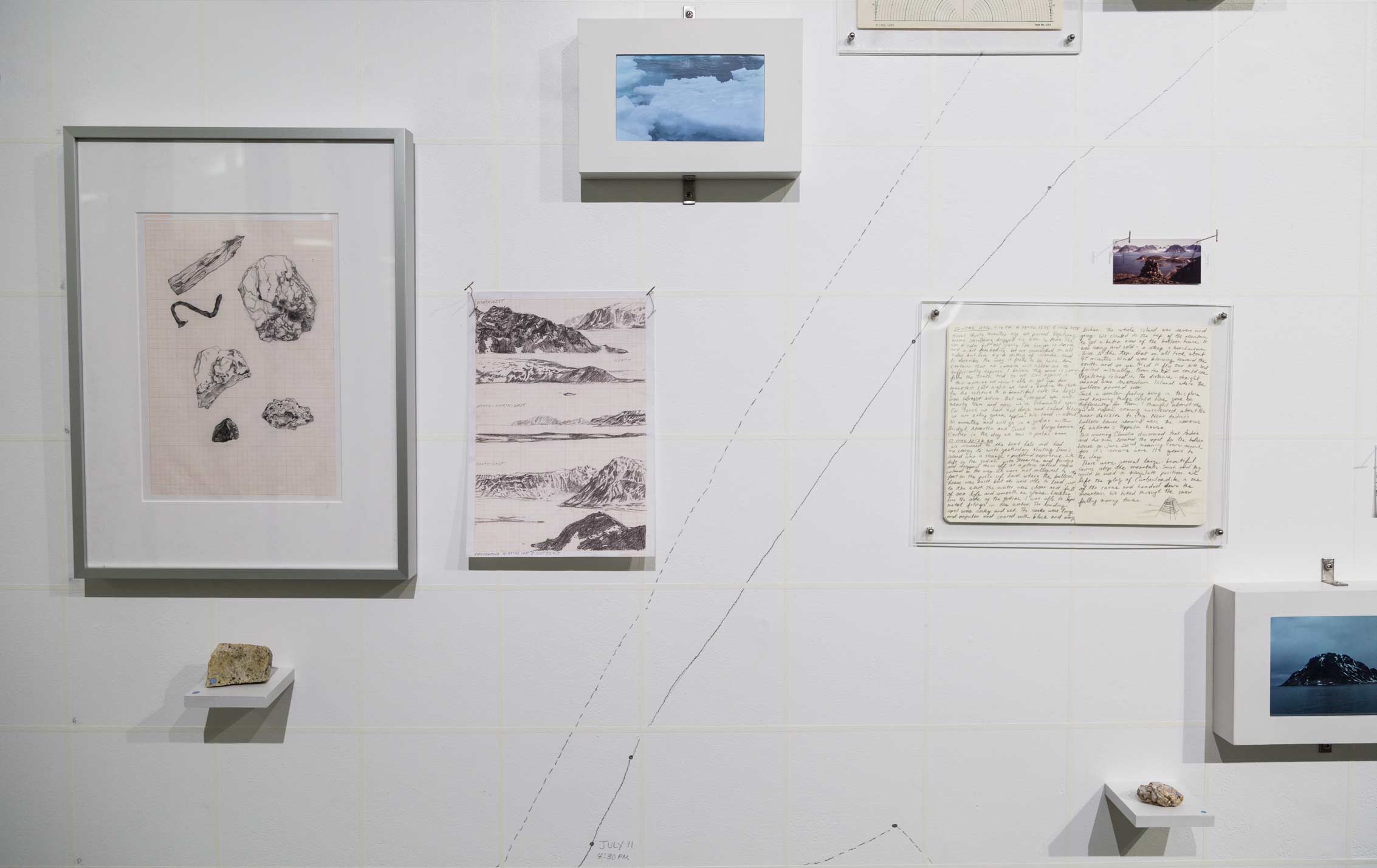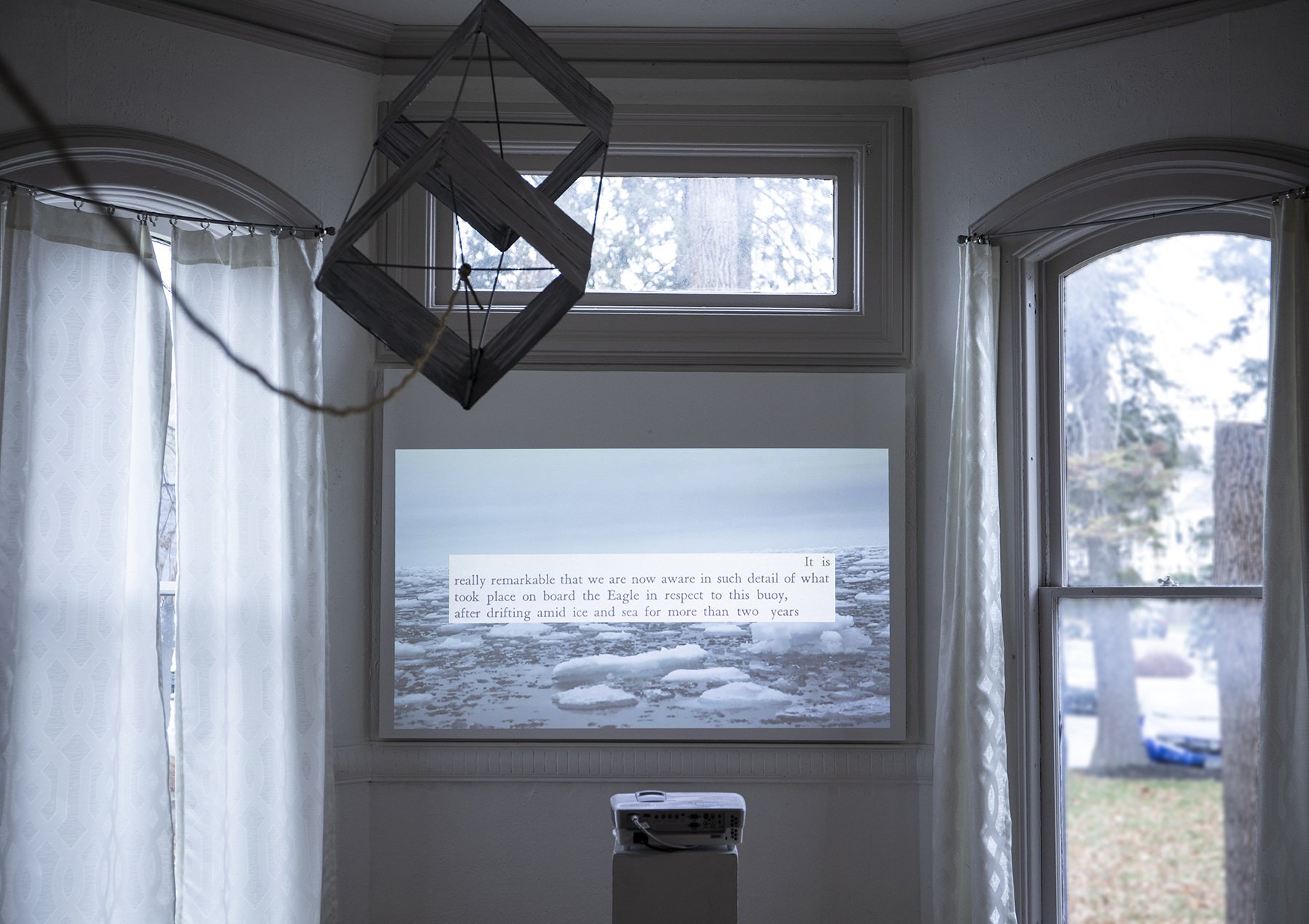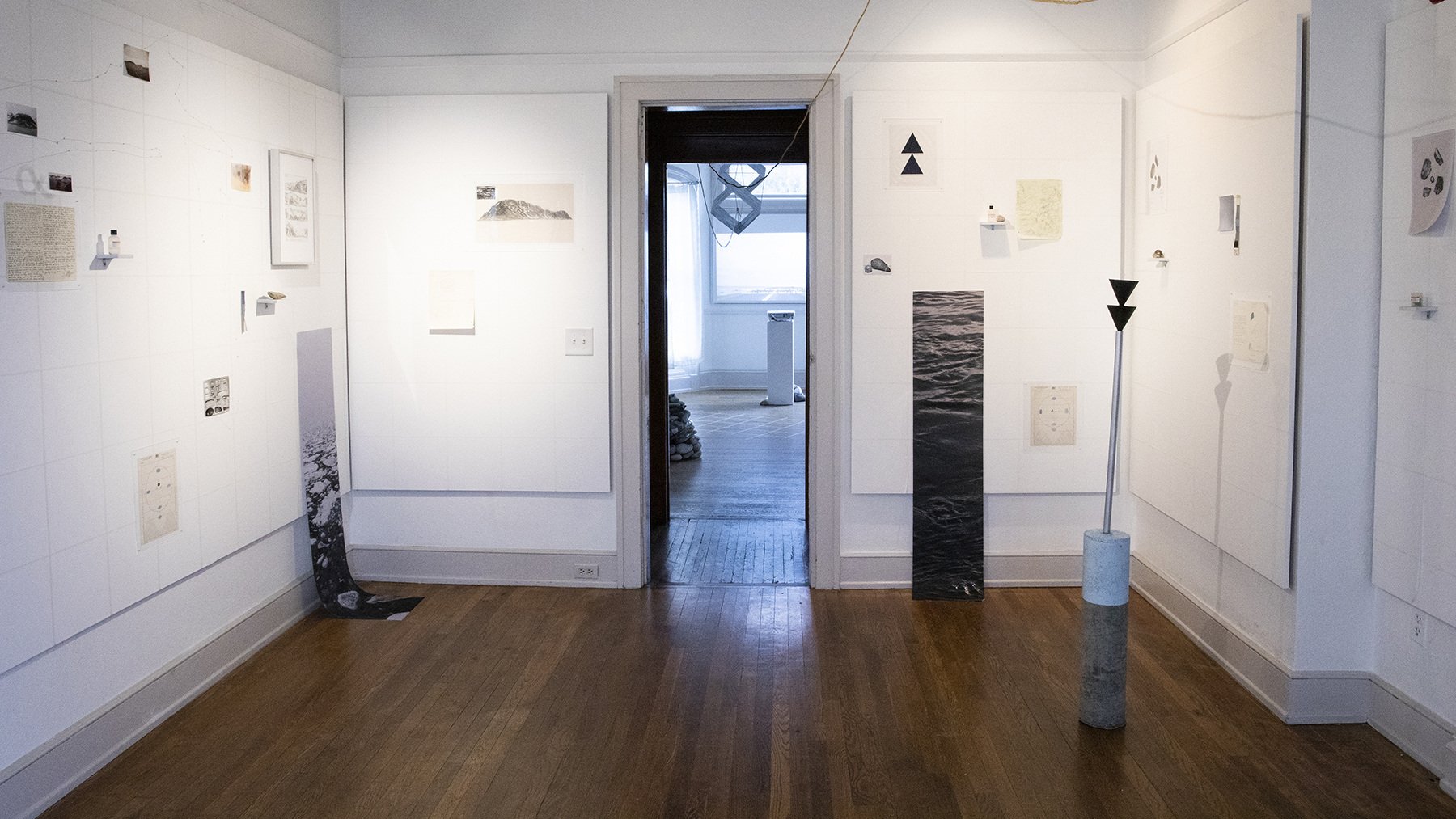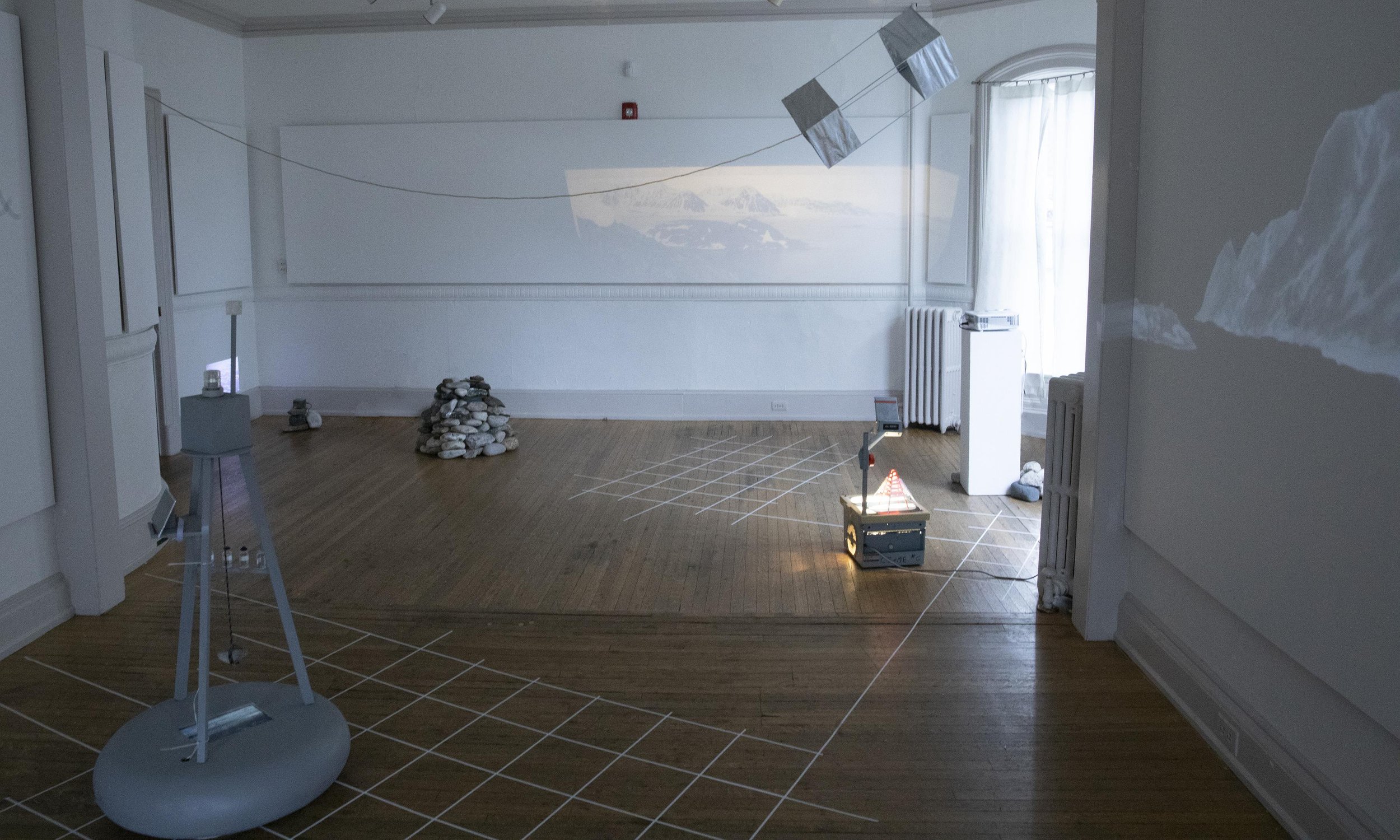Farthest North (2015-2019)
Farthest North is a collaboration with Claudia O’Steen synthesizing the profound psychological effect of traversing one of the most rarefied places on Earth in the footprints of a failed explorer. In 1897, explorer S.A. Andrée attempted to fly to the North Pole in a silk hydrogen balloon. Andrée intended to be first to the North Pole, and planned to map the region using aerial cameras engineered for cartographic use. Shortly after taking off from the archipelago of Svalbard, however, the expedition crashed. Their remains were found 33 years later, the cause of their deaths unknown. Amongst the remains were several canisters of exposed film, preserved in the snow.
Miles away in space and time, we spent the better part of 2016 deciphering the topography of the arctic landscape through the flat surface of a screen, closely inspecting each pixel. Later that summer, we travelled to the high arctic, retracing the route of Andrée. From the top of a mountain, we gazed across Virgohamna, the same arctic harbor that appears in Andrée’s photographs, and below them observed the remains of his balloon hangar, ravaged by the harsh climate. Andrée was a proponent of technological progress and one of the first engineer-explorers, and believed that technology would ultimately conquer (and capture) the natural world. Believing the voyage would take only 60 hours, his crew lacked many of the supplies needed to survive in the harsh Arctic landscape. Andrée’s pursuit, which included backing from Nobel, and included an extensive collection of self-designed navigational inventions, was one of the most publicized media events in the western world in its time, despite the spectacular (and nearly instant) failure of his guidance system.



















